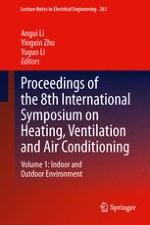2014 | OriginalPaper | Chapter
23. Ventilation System Type and the Resulting Classroom Temperature and Air Quality During Heating Season
Authors : Jie Gao, Pawel Wargocki, Yi Wang
Published in: Proceedings of the 8th International Symposium on Heating, Ventilation and Air Conditioning
Publisher: Springer Berlin Heidelberg
Activate our intelligent search to find suitable subject content or patents.
Select sections of text to find matching patents with Artificial Intelligence. powered by
Select sections of text to find additional relevant content using AI-assisted search. powered by
